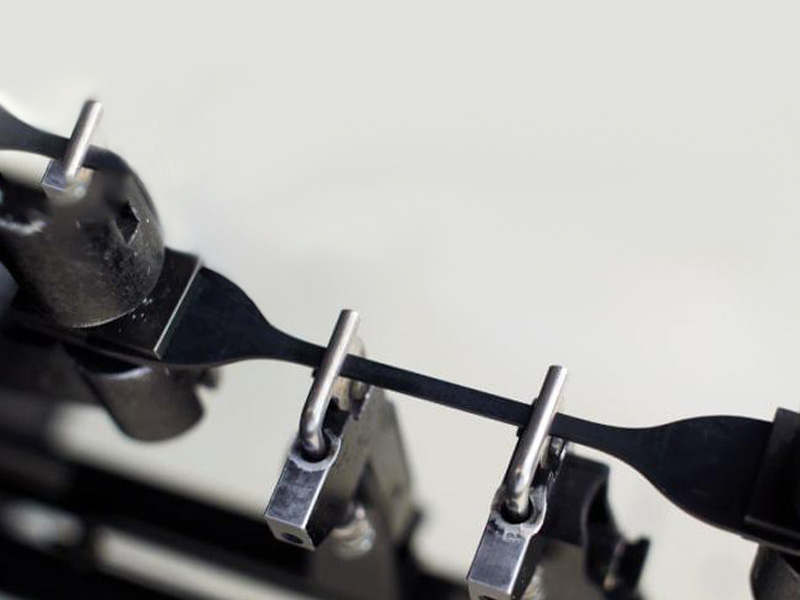ASTM D2000 / SAE J200
ASTM D2000 is a standard classification system for rubber products in automotive applications.

The main purpose of ASTM D2000 is to provide engineers with an exhaustive qualification system for various rubber compounds. By standardizing the system, engineers can quickly reference the various characteristics of a specific material to understand if it could potentially be a good match for a given application. The system was developed to allow for flexibility and proper qualification of future materials and compounds that are developed.
SAE J200 was created to mirror the ASTM D2000 standard, but apply mainly to rubber compounds being used in automotive applications. While both standards were issued to provide engineers with a thorough method of qualifying materials, some applications will be extremely unique and require custom qualification methods. In these cases, the material manufacturer or 3rd party testing labs can be consulted to understand the best application for a given material.
The main classifications that are used in the standard are Type and Class.
While ASTM D2000 was primarily developed to be used in the automotive industry (SAE J200 was developed specifically for automotive applications), it can be applied to a wide variety of industry applications. Aerospace, medical and industrial applications all have many of the same considerations when specifying materials for use in their products. So, the classification can easily be applied across products in a number of industries that utilize the following polymers:
Classification System D2000-SAE J200 Material Designation (Type and Class)
The Line Call-Out (or specification) provides engineers with a quick reference point when looking for a material to meet a certain application. Application specifications (eg temperature, fluids, weathering) help to dictate a smaller list of potential materials to be chosen for the product design. While further testing would most likely be required, it greatly limits the list of viable options and helps to reduce qualification testing costs and variables in the research and development stages. A line call out contains the grade, type, class, hardness, tensile strength along with the suffix requirements for a given material. An example has been listed below with the definition for each number or letter designation (example courtesy of ASTM D2000 standard):
ASTM D2000 M2BC 507 A14 EO34
Basic Requirements:
Suffix Requirements:
There are a wide variety of ASTM testing standards that are referenced in D2000 that are used to get the values present in the material specification. Obviously, each of these standards can be used to test individual material characteristics or to further qualify a given material or benchmark it against another option. Several standards are listed below for reference:
Smithers provides both chemical analysis of polymer based materials as well as physical testing to better understand material characteristics. Custom benchmarking studies are commonly done to help engineers with material selection or to understand material failures in the field. In addition, once materials have been integrated in an end use product, Smithers also works with client on standard and custom product testing protocols. Rubber products such as hoses, belts and seals are commonly tested to ensure they meet industry regulations and OEM specifications.